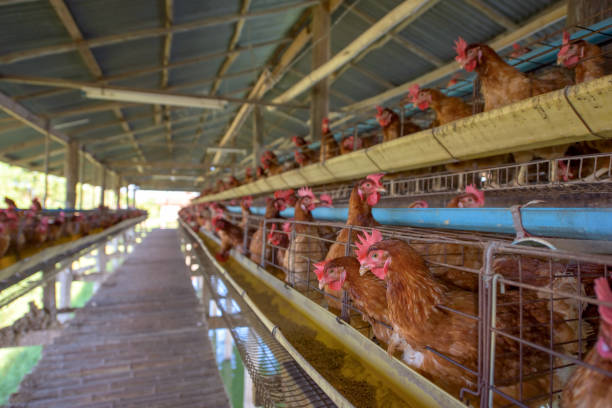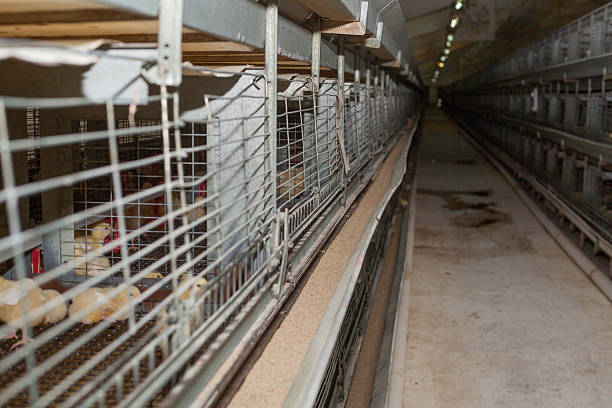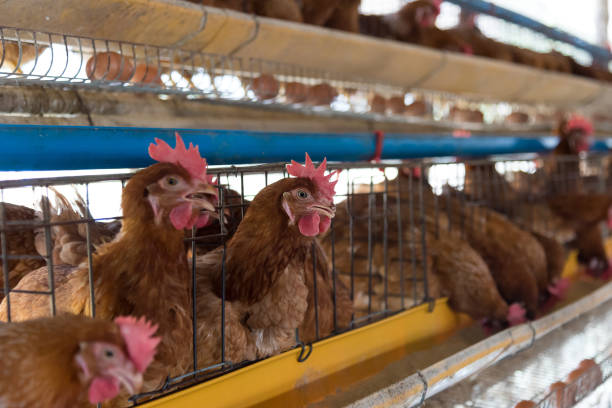Boosting Poultry Farm Efficiency in Ghana: The Power of Automatic Cage Systems
Boosting Poultry Farm Efficiency in Ghana: The Power of Automatic Cage Systems
Ghana’s poultry industry is a vibrant sector with a significant impact on the nation’s economy and food security. However, traditional farming practices often lead to inefficiencies that hinder growth and profitability. To address these challenges, Ghanaian poultry farmers are increasingly turning to automatic cage systems. This technology offers a multitude of benefits, ranging from improved bird health and productivity to reduced labor costs and enhanced environmental sustainability. This article will explore the transformative power of automatic cage systems in boosting poultry farm efficiency in Ghana.
The State of Poultry Farming in Ghana
Before diving into the advantages of automatic cage systems, it’s crucial to understand the current landscape of poultry farming in Ghana. The poultry sector is dominated by smallholder farmers who typically rely on extensive farming methods. These methods often involve allowing chickens to roam freely or keeping them in simple, non-automated structures.
While these traditional approaches have their merits, they also present several challenges:
High mortality rates: Free-ranging chickens are more susceptible to diseases and predators, leading to higher mortality rates.
Low egg production: Traditional housing provides limited environmental control, resulting in lower egg production and inconsistent laying cycles.
Inefficient labor: Manual feeding, watering, and egg collection are labor-intensive and time-consuming tasks, increasing production costs.
Poor biosecurity: Open housing increases the risk of disease outbreaks, which can devastate entire flocks.
These limitations hinder the growth potential of Ghanaian poultry farms and make it difficult for farmers to compete with imported poultry products. The adoption of modern technologies, such as automatic cage systems, can help overcome these challenges and unlock the full potential of the poultry sector.
What are Automatic Cage Systems?
Automatic cage systems are advanced housing solutions designed to automate various aspects of poultry farming, including feeding, watering, egg collection, and waste removal. These systems typically consist of multiple tiers of cages arranged in rows within a controlled environment.
Here’s a breakdown of the key components and features of automatic cage systems:
Cages: The cages are designed to provide optimal space and comfort for the birds while facilitating efficient management. They are typically made of durable, rust-resistant materials and feature sloped floors for easy egg collection.
Automatic feeding system: This system delivers a precise amount of feed to each cage at predetermined intervals. It ensures that all birds receive adequate nutrition, minimizing feed waste and promoting uniform growth.
Nipple drinking system: This system provides a constant supply of fresh, clean water to each cage via nipple drinkers. It reduces water wastage and minimizes the risk of contamination.
Automatic egg collection system: This system gently collects eggs from each cage using a conveyor belt system. It minimizes egg breakage and reduces the labor required for egg collection.
Automatic manure removal system: This system removes manure from the cages regularly, reducing ammonia emissions and improving air quality.
Environmental control system: This system regulates temperature, humidity, and ventilation within the poultry house, creating an optimal environment for bird health and productivity.
Benefits of Automatic Cage Systems for Poultry Farms in Ghana
The adoption of automatic cage systems offers a wide range of benefits for poultry farms in Ghana:
Increased Efficiency and Productivity
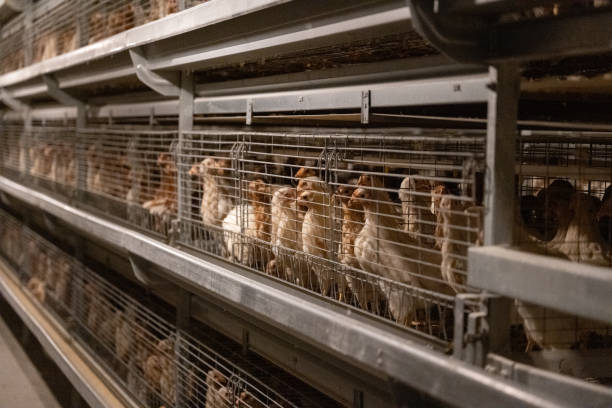
Automatic cage systems significantly improve the efficiency of poultry farming operations, resulting in higher productivity.
Higher egg production: The controlled environment and automated feeding and watering systems promote optimal laying conditions, leading to increased egg production per hen.
Reduced feed waste: The precise feed delivery system minimizes feed waste, reducing feed costs and improving feed conversion ratios.
Lower mortality rates: The improved biosecurity and controlled environment reduce the risk of disease outbreaks and minimize mortality rates.
Faster growth rates: In broiler production, automated systems ensure consistent access to feed and water, promoting faster growth rates and shorter production cycles.
Reduced Labor Costs
Manual labor is a significant expense for poultry farms in Ghana. Automatic cage systems reduce the need for manual labor, resulting in substantial cost savings.
Automated feeding: The automatic feeding system eliminates the need for manual feed distribution, saving time and labor.
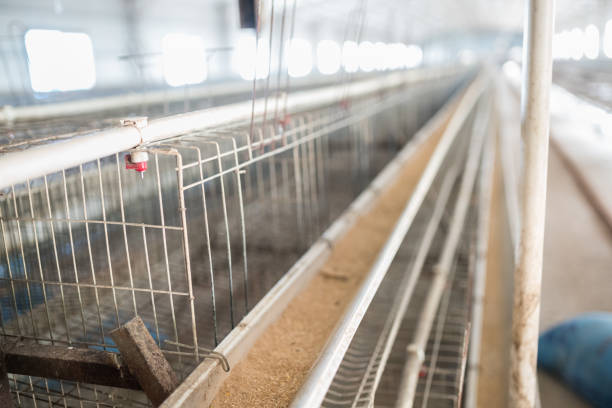
Automated watering: The nipple drinking system provides a constant supply of water, reducing the labor required for watering.
Automated egg collection: The automatic egg collection system eliminates the need for manual egg collection, saving significant time and labor.
Automated manure removal: The automatic manure removal system reduces the labor required for cleaning and sanitation.
Improved Bird Health and Welfare
Automatic cage systems promote better bird health and welfare compared to traditional farming methods.
Improved biosecurity: The enclosed environment reduces the risk of disease outbreaks by limiting contact with external pathogens.
Reduced stress: The controlled environment and consistent access to feed and water reduce stress levels in birds, improving their overall well-being.
Better hygiene: The automatic manure removal system reduces ammonia emissions and improves air quality, creating a healthier environment for the birds.
Easier monitoring: Caged systems allow farmers to easily monitor the health and behavior of individual birds, enabling early detection of health problems.
Enhanced Environmental Sustainability
Automatic cage systems can contribute to more sustainable poultry farming practices.
Reduced ammonia emissions: The automatic manure removal system reduces ammonia emissions, minimizing the environmental impact of poultry farming.
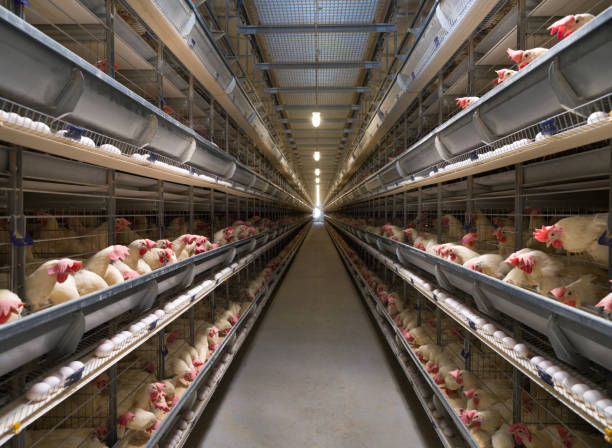
Improved manure management: The automated system facilitates efficient manure collection and processing, allowing farmers to utilize manure as a valuable fertilizer source.
Reduced water usage: Nipple drinking systems minimize water waste, conserving water resources.
Reduced land usage: Cage systems allow for higher stocking densities, reducing the amount of land required for poultry farming.
Increased Profitability
By increasing efficiency, reducing labor costs, improving bird health, and enhancing environmental sustainability, automatic cage systems can significantly increase the profitability of poultry farms in Ghana. The initial investment in these systems is offset by the long-term benefits of increased production, reduced costs, and improved market competitiveness.
Challenges and Considerations
While automatic cage systems offer numerous advantages, there are also some challenges and considerations to keep in mind:
Initial investment cost: The initial investment in automatic cage systems can be substantial, which may be a barrier for smallholder farmers with limited capital.
Technical expertise: Operating and maintaining automatic cage systems requires technical expertise, which may not be readily available in some rural areas of Ghana.
Electricity supply: Automatic cage systems rely on a stable electricity supply, which can be a challenge in areas with unreliable power grids.
Maintenance and repairs: Regular maintenance and timely repairs are essential to ensure the optimal performance of automatic cage systems.
Bird welfare concerns: Some animal welfare advocates raise concerns about the potential for reduced bird welfare in caged systems if not properly managed.
Overcoming the Challenges
Despite these challenges, there are several strategies that can be employed to promote the adoption of automatic cage systems in Ghana:
Government subsidies and financial assistance: The government can provide subsidies and financial assistance to help smallholder farmers afford the initial investment in automatic cage systems.
Training and education programs: Training and education programs can be implemented to equip farmers with the technical skills needed to operate and maintain automatic cage systems.
Investment in renewable energy: Investing in renewable energy sources, such as solar power, can help address the challenge of unreliable electricity supply.
Development of local manufacturing: Encouraging the development of local manufacturing capabilities for automatic cage systems can reduce costs and improve accessibility.
Implementation of animal welfare standards: Implementing and enforcing animal welfare standards can ensure that birds are raised in humane conditions.
The Future of Poultry Farming in Ghana
Automatic cage systems represent a significant step forward in the modernization of poultry farming in Ghana. By embracing this technology, Ghanaian poultry farmers can enhance their efficiency, improve their profitability, and contribute to the sustainable growth of the poultry sector.
As the demand for poultry products continues to rise in Ghana, the adoption of automatic cage systems will play an increasingly important role in meeting this demand and ensuring food security. With the right support and investment, Ghanaian poultry farmers can harness the power of automatic cage systems to transform their farms into thriving, competitive businesses. The future of poultry farming in Ghana is bright, and automatic cage systems are poised to be a key driver of this transformation. By integrating these advanced systems, Ghana can move closer to self-sufficiency in poultry production, reduce reliance on imports, and bolster its agricultural economy.



